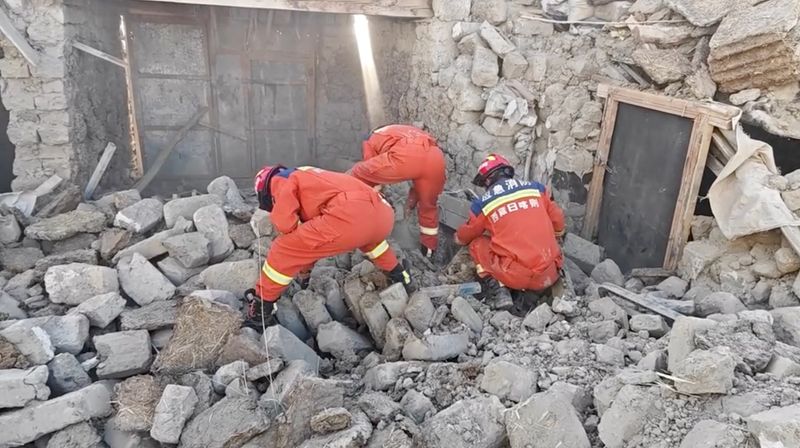BEIJING (Reuters) - Tibet was struck with a magnitude 6.8 earthquake on Tuesday, one of the most powerful tremors in recent years, that hit the northern foothills of the Himalayas, killing at least 95 people.
Tibet is a seismically active zone. It logged more than 100 earthquakes of magnitude of at least 3.0 last year. But quakes of magnitude 7.0 and above are rare, with just nine since the turn of the 20th century.
The epicentre was located in Tingri, a rural county near the boundary where the Indian tectonic plate collides with the Eurasian plate, creating long fault-lines across the Tibetan plateau.
Below are some notable quakes in Tibet in recent decades:
JUNE 1, 2024
Magnitude: 5.9
Epicenter: Nagqu, northern Tibet
Tibet's biggest earthquake in 2024, but no reports of casualties or property losses due to its isolated location.
NOV. 18, 2017
Magnitude: 6.9
Epicenter: Mainling, eastern Tibet
The largest earthquake in the Lhasa block since 1950. The Lhasa block, bounded by fault-lines, forms southern Tibet. The Mainling quake triggered more than 300 aftershocks, affecting over 12,000 people and damaging nearly 3,000 houses. Three people were hurt.
OCT. 6, 2008
Magnitude: 6.6
Epicenter: Damxung, central Tibet
At least 10 people were killed and 34 injured. The epicentre was close to that of a 1951 quake.
NOV. 18, 1951
Magnitude: 8.0
Epicenter: Damxung, central Tibet
The second earthquake of magnitude 8.0 or above since 1950. It formed a rupture in the ground that spanned 81 kilometres (50 miles).
AUG. 15, 1950
Magnitude: 8.6

Epicenter: Medog, eastern Tibet
One of the strongest earthquakes recorded globally in the 20th century. The quake destroyed thousands of homes, temples and mosques and killed over 3,000 people in Tibet and more than 1,000 in Assam, India. In the hardest-hit areas, mountains shifted and landscapes were altered. Several peaks collapsed, blocking the Yarlung Zangbo river, and landslides plunged villages into the river.